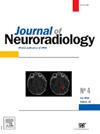Deep learning models based on DWI-MRI for prognosis prediction in acute ischemic stroke receiving intravenous thrombolysis: Development and validation
IF 3.3
3区 医学
Q2 CLINICAL NEUROLOGY
引用次数: 0
Abstract
Objective
To develop and validate predictive models based on diffusion-weighted imaging MRI (DWI-MRI) for assessing the prognosis of patients with acute ischemic stroke (AIS) treated with intravenous thrombolysis, and to compare the performance of deep learning versus traditional machine learning methods.
Materials and methods
A retrospective analysis was conducted on 682 AIS patients from two hospitals. Data from Hospital 1 were divided into a training set (70 %) and a test set (30 %), while data from Hospital 2 were used for external validation. Five predictive models were developed: Model A (clinical features), Model B (radiomic features based on DWI-MRI), Model C (deep learning features), Model D (clinical + radiomic features), and Model E (clinical + deep learning features). Performance metrics included Area Under the Curve (AUC), sensitivity, specificity, and accuracy.
Results
In the test set, Models A, B, and C achieved AUCs of 0.760, 0.820, and 0.857, respectively. The combined models, D and E, showed superior performance with AUCs of 0.904 and 0.925, respectively. Model E outperformed Model D and also demonstrated robust performance in external validation (AUC = 0.937).
Conclusion
Deep learning models integrating DWI-MRI and clinical features outperformed traditional methods, demonstrating strong generalizability in external validation. These models may support clinical decision-making in AIS prognosis.
基于DWI-MRI的深度学习模型用于急性缺血性脑卒中静脉溶栓治疗的预后预测:开发与验证。
目的:建立并验证基于弥散加权成像MRI (DWI-MRI)的预测模型,用于评估急性缺血性卒中(AIS)患者静脉溶栓治疗的预后,并比较深度学习与传统机器学习方法的性能。材料与方法:对两所医院682例AIS患者进行回顾性分析。医院1的数据分为训练集(70%)和测试集(30%),而医院2的数据用于外部验证。建立了5个预测模型:A模型(临床特征)、B模型(基于DWI-MRI的放射学特征)、C模型(深度学习特征)、D模型(临床 + 放射学特征)和E模型(临床 + 深度学习特征)。性能指标包括曲线下面积(AUC)、灵敏度、特异性和准确性。结果:在测试集中,模型A、B、C的auc值分别为0.760、0.820、0.857。组合模型D和E的auc分别为0.904和0.925,表现出较好的性能。模型E优于模型D,在外部验证中也表现出稳健的性能(AUC = 0.937)。结论:融合DWI-MRI和临床特征的深度学习模型优于传统方法,在外部验证中具有较强的泛化能力。这些模型可以为AIS预后的临床决策提供支持。
本文章由计算机程序翻译,如有差异,请以英文原文为准。
求助全文
约1分钟内获得全文
求助全文
来源期刊

Journal of Neuroradiology
医学-核医学
CiteScore
6.10
自引率
5.70%
发文量
142
审稿时长
6-12 weeks
期刊介绍:
The Journal of Neuroradiology is a peer-reviewed journal, publishing worldwide clinical and basic research in the field of diagnostic and Interventional neuroradiology, translational and molecular neuroimaging, and artificial intelligence in neuroradiology.
The Journal of Neuroradiology considers for publication articles, reviews, technical notes and letters to the editors (correspondence section), provided that the methodology and scientific content are of high quality, and that the results will have substantial clinical impact and/or physiological importance.
 求助内容:
求助内容: 应助结果提醒方式:
应助结果提醒方式:


